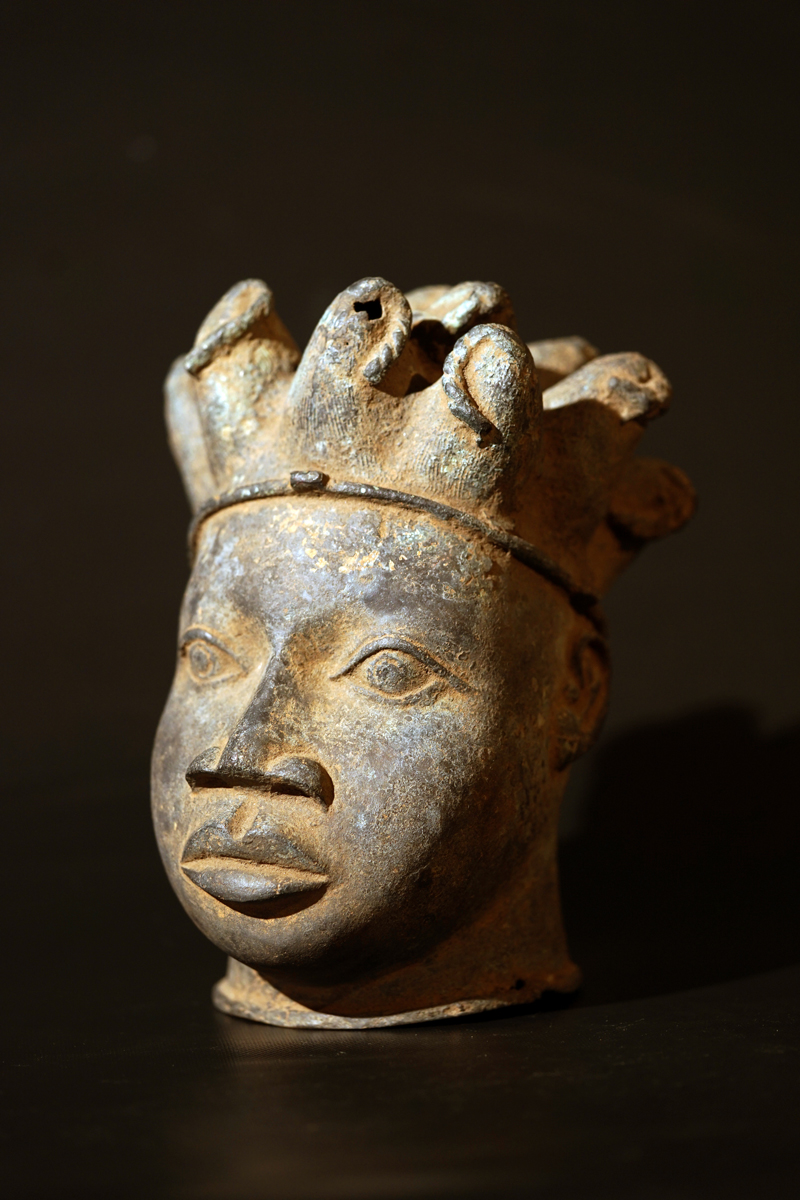 |
A Tada bronze head whose hairstyle consists of a number of small braided pigtails sticking out, held together by a band at the base of the forehead. Low forehead, eyes with heavy lids, the nose narrow except for the wings in relation to the full lips, close-fitting ears; very beautiful age patina.
The narative is connected with the foundation of the Nupe based on the Tsoede Kingdom. in the Nupe villages of Tada and Jebba—one of them apparently an Ife work and another in a more recent Yoruba style. Others of this group, which include the largest castings ever made in sub-Saharan Africa, share features with Benin sculpture and have other elements that are widely distributed in on both sides of the Niger, but mainly to the east, live the Igbo. Traditionally they have lived in small and often isolated settlements scattered through the forest. Only on the northern and western edges of the area, under influence from Igala and Benin, are hereditary rulers found.
Among the most well known of the works produced by Ife casters are a series of naturalistic heads. Despite the difficulties, Ife smiths cast many fine works in nearly pure copper. The seated Tada figure dated to the late thirteenth or early fourteenth century and named for the village in which it was found, is one of the finest works in this tradition. It is hollow-cast and, at fifty-four centimeters tall, half-lifesize. The sculpture was cast in several separate pourings. Though found on the bank of the Niger River far north of Ife, the work shares the stylistic naturalism of other Ife metal and terracotta works.
The naturalistic proportions of head and body and lifelike limbs, arms, and torso are some of the distinctive features of this style. Also characteristic of Ife culture, the figure wears a wrapper with a sash tied on the left hip. source Alice Apley.
sold
|
 photo: tribalartforum.com/ identification no. FSC06879.jpg
photo: tribalartforum.com/ identification no. FSC06879.jpg |
|